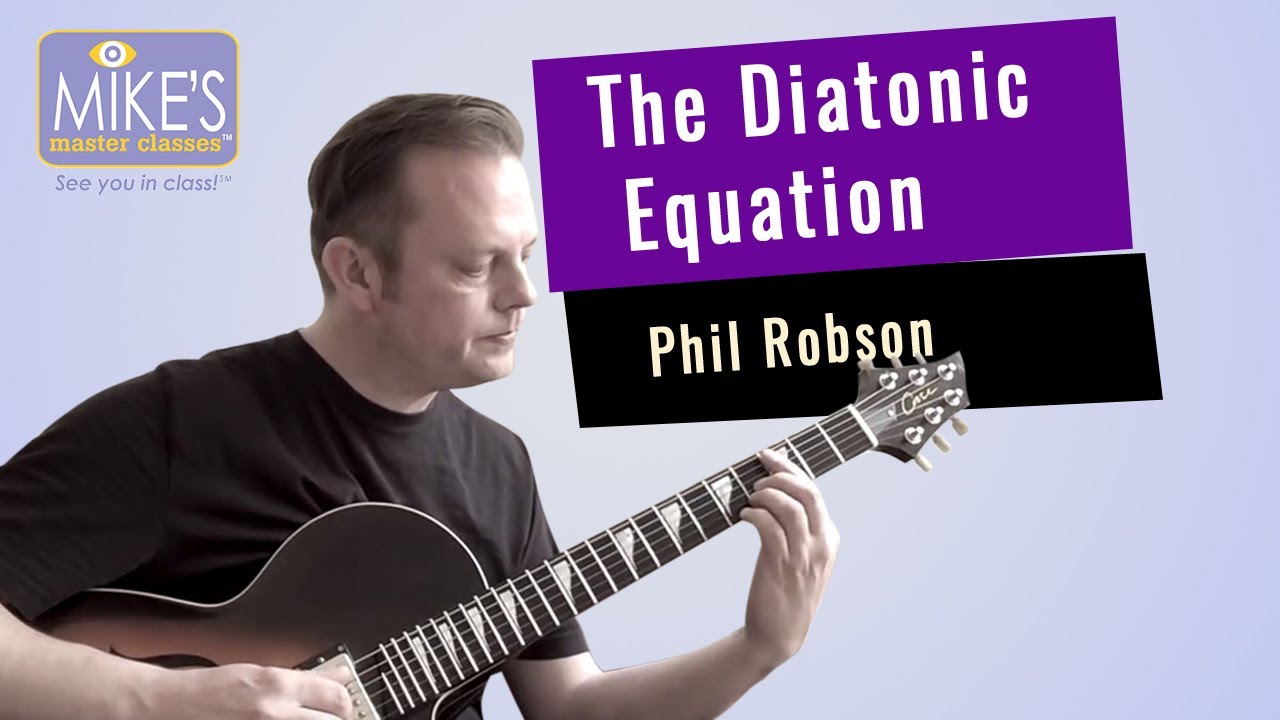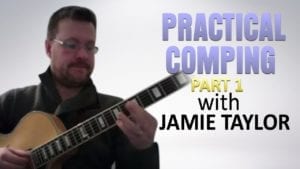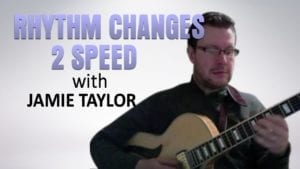Description
In this lesson Phil Begins by playing a piece of improvised music based entirely on the notes from the C major scale alone. After a short welcoming introduction and synopsis of what is to come, he then explains the thinking behind the piece of music as an exercise, bringing forward themes which remain central throughout the video. These include bringing to our attention that the scale in itself contains tension & release, strong & neutral notes, etc. and that developing the ability to manipulate cadences is crucial to the exercises to come & to playing music generally as an improviser. Robson proceeds to go over some basic information regarding the 3 scales which are the basis of the lesson, these being the major, harmonic minor & melodic minor scales, in order to firmly focus on the sound & different qualities of the 3. Offering some general advice on how to practice the scales, he quickly moves on to generating chord types from them. This is done by offering some practice arpeggio pattern ideas over 3 & 2 octaves before moving on to the main focus of harmonizing the scale in chords which is dealt with in depth. Beginning with chords constructed in 3rds & later moving onto ones constructed in 4ths, Phil offers many great examples of voicing variations including inversions whilst taking time to discuss modal music, comping & concepts of jazz harmony generally as he goes along.
Being a firm believer that the student will benefit the most by really understanding the processes being used & then applying them to find more examples themselves, Robson therefore offers the conceptual understanding for the student to take these ideas as far as they wish to, without attempting to give every possible permutation himself. This way the student can then go on to finding many more voicings, patterns, sounds etc.
At this point he reaches the crucial equation! This is explained clearly & in depth in the film but to summarize briefly, it is a system of finding modal scale alternatives to use with the various chord types generated by harmonizing these 3 scales in both 3rds & 4ths by treating the chords as degrees of the scale. This offers a fantastic new range of sounds and colors for improvising on chord types which are very familiar already such as minor 7th, half diminished etc. These scale alternatives can be applied to both chordal & single note improvisation & Robson plays many examples in his unique way, in order to inspire the student to look further into possibilities for all the chord types generated from these 3 scales alone. Whilst acknowledging that there are other types of scales not covered here, this detailed analysis of these 3 certainly covers a huge spectrum of the kind of sounds we find in contemporary jazz & music.
In short, this lesson gives a solid tool set which could enable guitarists or any musicians to find a great deal of harmonic variation & a vastly expanded palette. The film ends with Phil improvising over the form of ‘So what’/’Impressions’ whilst including many of the sounds discussed earlier in the video.
Running time: 94 minutes
3 pages of exercise in standard notation and TAB
The Diatonic Equation Class Content | Phil Robson
In this lesson Phil Begins by playing a piece of improvised music based entirely on the notes from the C major scale alone. After a short welcoming introduction and synopsis of what is to come, he then explains the thinking behind the piece of music as an exercise, bringing forward themes which remain central throughout the video. These include bringing to our attention that the scale in itself contains tension & release, strong & neutral notes, etc. and that developing the ability to manipulate cadences is crucial to the exercises to come & to playing music generally as an improviser. Robson proceeds to go over some basic information regarding the 3 scales which are the basis of the lesson, these being the major, harmonic minor & melodic minor scales, in order to firmly focus on the sound & different qualities of the 3. Offering some general advice on how to practice the scales, he quickly moves on to generating chord types from them. This is done by offering some practice arpeggio pattern ideas over 3 & 2 octaves before moving on to the main focus of harmonizing the scale in chords which is dealt with in depth. Beginning with chords constructed in 3rds & later moving onto ones constructed in 4ths, Phil offers many great examples of voicing variations including inversions whilst taking time to discuss modal music, comping & concepts of jazz harmony generally as he goes along.
Being a firm believer that the student will benefit the most by really understanding the processes being used & then applying them to find more examples themselves, Robson therefore offers the conceptual understanding for the student to take these ideas as far as they wish to, without attempting to give every possible permutation himself. This way the student can then go on to finding many more voicings, patterns, sounds etc.
At this point he reaches the crucial equation! This is explained clearly & in depth in the film but to summarize briefly, it is a system of finding modal scale alternatives to use with the various chord types generated by harmonizing these 3 scales in both 3rds & 4ths by treating the chords as degrees of the scale. This offers a fantastic new range of sounds and colors for improvising on chord types which are very familiar already such as minor 7th, half diminished etc. These scale alternatives can be applied to both chordal & single note improvisation & Robson plays many examples in his unique way, in order to inspire the student to look further into possibilities for all the chord types generated from these 3 scales alone. Whilst acknowledging that there are other types of scales not covered here, this detailed analysis of these 3 certainly covers a huge spectrum of the kind of sounds we find in contemporary jazz & music.
In short, this lesson gives a solid tool set which could enable guitarists or any musicians to find a great deal of harmonic variation & a vastly expanded palette. The film ends with Phil improvising over the form of ‘So what’/’Impressions’ whilst including many of the sounds discussed earlier in the video.
Running time: 94 minutes
3 pages of exercise in standard notation and TAB
| The Diatonic Equation | |||
| The Diatonic Equation | 01:34:00 | ||




